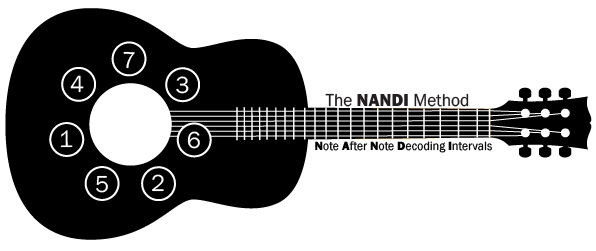Extended Chords are derived by stacking tensions that are a “third” apart on top of seventh chords.
The chart below shows how ninth chords are built by stacking a major or a minor third on top depending on the quality of the Seventh Chords.
Quality Maj9th Min9th Dom9th
Intervals 1 - 3 - 5 - 7 - 9 1 - ♭3 - 5 - ♭7 - 9 1 - 3 - 5 - ♭7 - 9
Root C C-E-G-B-D C-E♭-G-B♭-D C-E-G-B♭-D
7th Chord + Third Maj7th + m3 Min7th + M3 Dom7 + M3
Below you’ll see how eleventh chords are built by stacking two tensions (ninth and eleventh) a “third” apart on top of a seventh chord:
Quality Maj9#11 Min9(11) Dom9#11
Intervals 1 - 3 - 5 - 7 - 9 - #11 1 - ♭3 - 5 - ♭7 - 9 - 11 1 - 3 - 5 - ♭7 - 9 - #11
Root C C-E-G-B-D-F# C-E♭-G-B♭-D-F C-E-G-B♭-D-F#
7th Chord + Third + Third Maj7th + m3 + M3 Min7th + M3 + m3 Dom7 + M3 + M3
Since the ninth and eleventh tensions are implied in a thirteenth chord, frequently you will find one or both of those tensions omitted in a thirteenth voicing. Nevertheless, it is important to know how to stack thirds on top of a seventh chord to derive a thirteenth chord.
Quality Maj13th Min13th Dom13th
Intervals 1 - 3 - 5 - 7 - 9 - 11 - 13 1 - ♭3 - 5 - ♭7 - 9 - 11 - 13 1 - 3 - 5 - ♭7 - 9 - 11 - 13
Root C C-E-G-B-D-F-A C-E♭-G-B♭-D-F-A C-E-G-B♭-D-F-A
7th Chord + Third + Third + Third Maj7th + m3 + m3 + M3 Min7th + M3 + m3 + M3 Dom7 + M3 + m3 + M3
Cmin7 (9,11,13)
By adding the 9th, 11th, and 13th tensions a major second above the root, third, fifth intervals of a Cmin7 chord you derive a Cmin7(9,11,13) chord (1-♭3-5-♭7-9-11-13). Since playing a chord with so many tensions sounds muddy, it is common to see a minor thirteenth voicing with only tensions 9 and 13 (♭3-♭7-9-13, ♭7-♭3-13-9) and even just the 13th (1-x-♭7-♭3-13, ♭7-♭3-13-1).
Study the table below to see how chords having different roots, interval structures, and chord qualities can still share some common notes with the Cmin13 chord. For example, starting a minor third up from C, if you play an E♭maj7 (9/#11) with the bass player sounding the note C, you will in effect be playing all the notes of a Cmin7(9,11,13) chord. This also means that a Cmin13 can be substituted with an E♭maj7 (9/#11) chord. Notice that every substituted chord below is an alternating minor third/major third up from the chord above it as you go down the table. You can see, for example, that a Gmin maj7 (9) is built off of the major third of the eleventh chord above it, the root of the B♭maj7 chord is a minor third up from the root of the ninth chord, and finally, the root of the Dmin chord is a major third from the root of the seventh chord, B♭maj7.
C7 (9,#11,13)
C13#11 is a dominant seventh chord with added tensions 9, #11 and 13 that are a major second above the chord tones (1-3-5) of the C7 chord. All the notes in the chords derived from intervals of the thirteenth chord will be the same as the notes in a C13#11 chord but they correspond to different intervals.
Cmaj7 (9,#11,13)
The Cmaj13 chord has tensions 9, #11 and 13 which are a major second up from chord tones 1-3-5 of the Cmaj7 chord. The chords derived from the third, fifth, seventh and ninth intervals of the thirteenth chord alternate in quality ( a minor chord from E, a major chord from G, a minor chord from B and a major chord from D).

